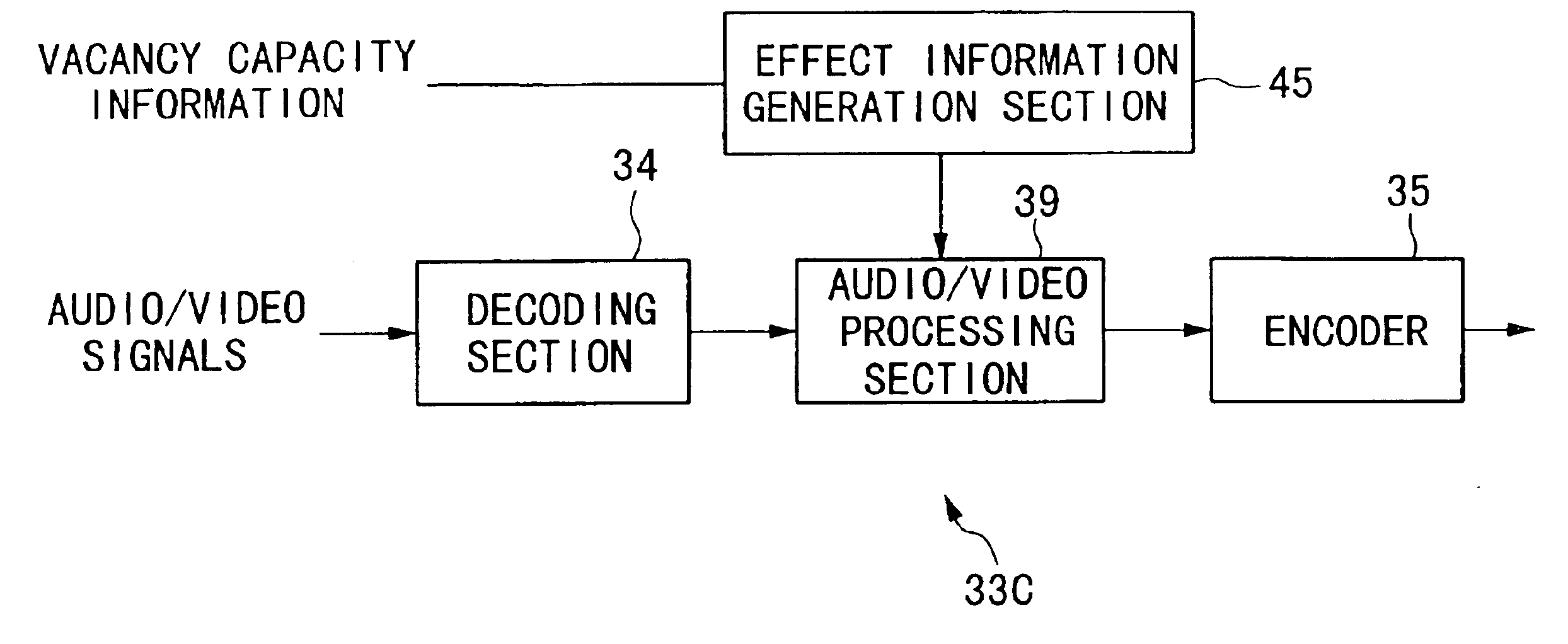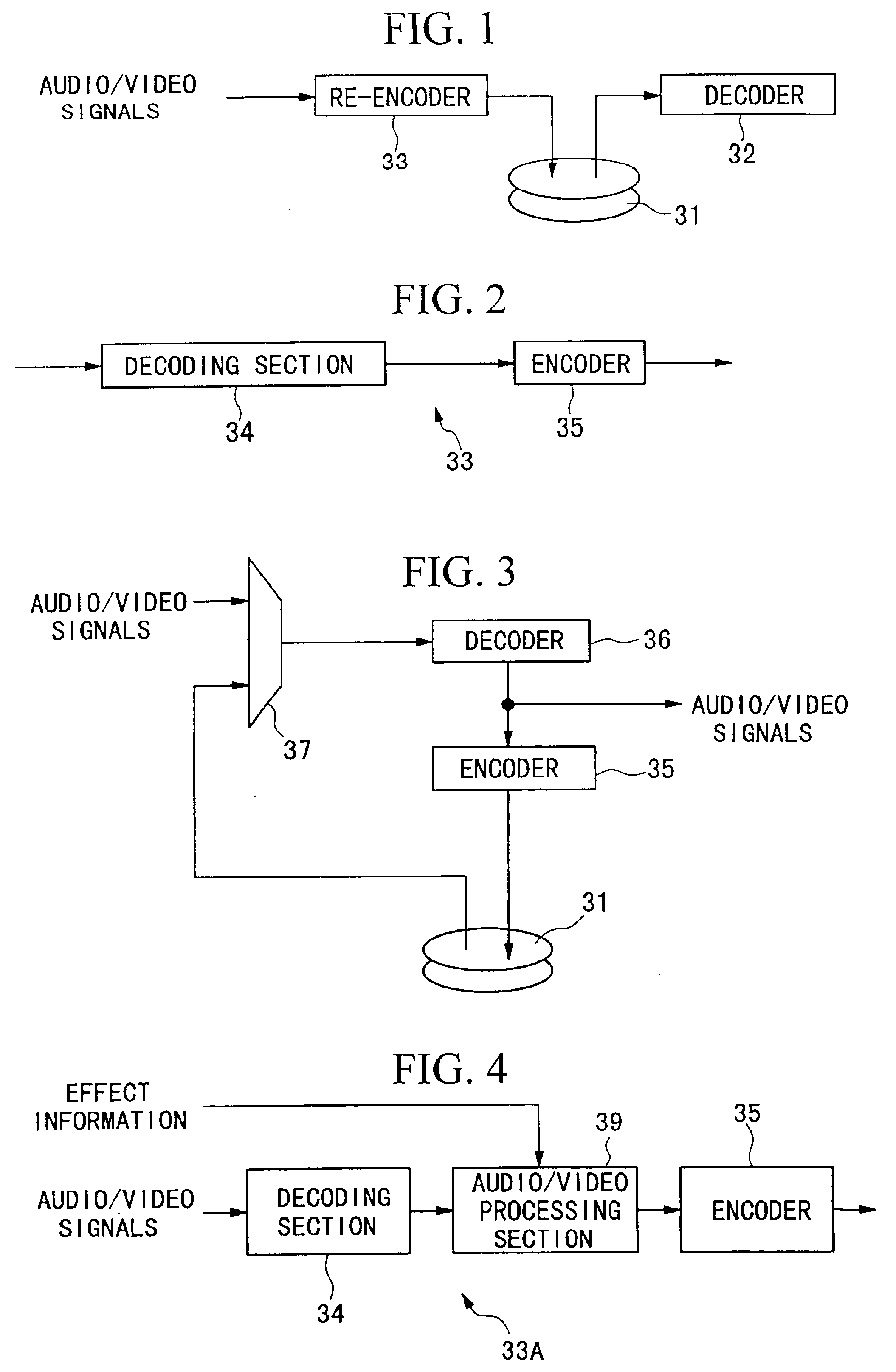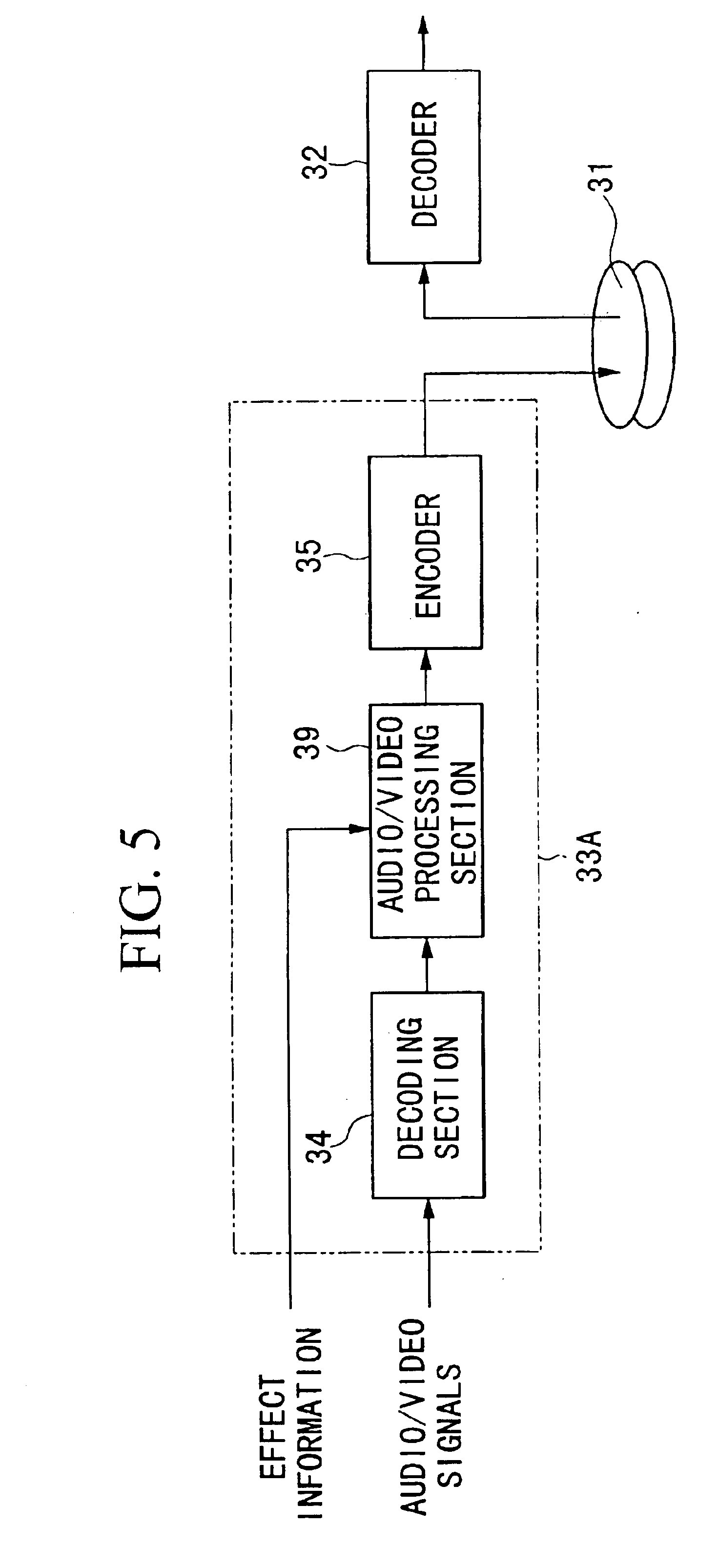Video apparatus and re-encoder therefor
a video and re-encoding technology, applied in the field of video equipment, can solve the problems of not having a video apparatus that can be used as a stand-alone re-encoding apparatus, no video apparatus that can be used for enhancing the capability of re-encoding, and no internal provision for embedding new in the video apparatus
- Summary
- Abstract
- Description
- Claims
- Application Information
AI Technical Summary
Benefits of technology
Problems solved by technology
Method used
Image
Examples
first embodiment
FIG. 1 is a block diagram of the video apparatus.
The video apparatus is comprised by a recorder 31 representing a recording medium, a decoder 32 and a re-encoder 33.
The operation of the video apparatus shown in FIG. 1 will be explained. First, audio / video signals input into the video apparatus or audio / video signals generated within the video apparatus are input into the re-encoder 33. The re-encoder 33 re-encodes the audio / video input signals, and outputs re-encoded audio / video signals. The re-encoded audio / video signals are accumulated in a recorder 31 as accumulated audio / video signals. The accumulated audio / video signals read from the recorder 31 are supplied as readout audio / video signals to a decoder 32. The decoder 32 decodes the readout audio / video signals, and externally outputs decoded audio / video signals as audio / video output signals.
FIG. 2 shows an example of the configuration of the re-encoder 33 used in the video apparatus. The re-encoder 33 is comprised by a decoding ...
PUM
 Login to View More
Login to View More Abstract
Description
Claims
Application Information
 Login to View More
Login to View More - R&D
- Intellectual Property
- Life Sciences
- Materials
- Tech Scout
- Unparalleled Data Quality
- Higher Quality Content
- 60% Fewer Hallucinations
Browse by: Latest US Patents, China's latest patents, Technical Efficacy Thesaurus, Application Domain, Technology Topic, Popular Technical Reports.
© 2025 PatSnap. All rights reserved.Legal|Privacy policy|Modern Slavery Act Transparency Statement|Sitemap|About US| Contact US: help@patsnap.com



